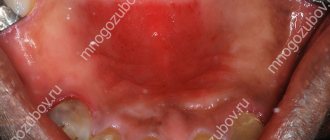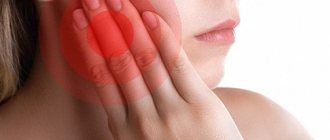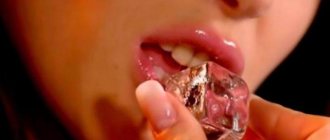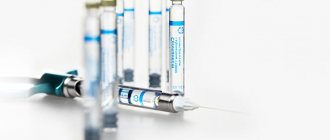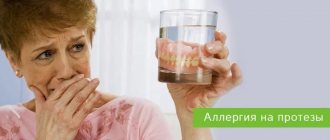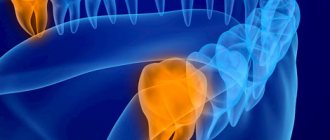Toothache is considered one of the most severe and unpleasant. It usually occurs suddenly when a person does not expect it. If this happens during the daytime, then you should immediately contact your dentist. But if this happened at night or on the road, then additional drugs and methods will be needed to help eliminate the pain and numb the tooth.
The causes of acute toothache can be different. This is an inflammatory process in the pulp cavity of the tooth and exposure of the dental nerve.
Possible causes of acute toothache
It is worth remembering the most common reasons:
- Caries. Bacteria destroy the surface of the tooth, resulting in a tooth reaction and discomfort when eating, eating sweets, or cold foods.
- Pulpitis. This is an inflammatory process that appears due to the fact that the patient did not treat caries in time. Pulpitis provokes acute toothache, which intensifies when drinking hot, cold drinks or food.
- Periodontitis. This is inflammation that occurs as a result of infection. Toothache has a pulsating form. It intensifies when mechanical stress is applied to the tooth.
- Periostitis. This is a special inflammation, it is accompanied by swelling of the gums. Afterwards, swelling and pain increase. Sometimes with periostitis, the upper jaw swells and the temperature rises. A pulsating toothache can be felt in the ears, eyes, and temples.
First aid for an angina attack
If an angina attack occurs, you must follow the instructions received from your attending physician or (if there were no such instructions) follow the algorithm:
- Note the time of onset of the attack.
- Measure blood pressure, heart rate and pulse.
- Sit (preferably in a chair with armrests) or lie in bed with the head of the bed raised.
- Provide fresh air (free your neck, open a window).
- Take acetylsalicylic acid (aspirin 0.25 g), chew the tablet and swallow.
You should not take acetylsalicylic acid (aspirin) if you are intolerant to it (allergic reactions) and have already taken it that day, as well as if there is a clear exacerbation of gastric and duodenal ulcers.
6. Take 0.5 mg of nitroglycerin. If in the form of a tablet, put it under the tongue and dissolve; if in the form of a capsule, bite it, do not swallow; if in the form of a spray, inhale (inject) one dose under the tongue without inhaling.
If, after taking nitroglycerin, severe weakness, sweating, shortness of breath, or a severe headache appears, then you need to lie down, raise your legs (on a bolster, pillow, etc.), drink one glass of water and then do not take nitroglycerin.
You should not take nitroglycerin if you have low blood pressure, severe weakness, sweating, severe headache, dizziness, acute impairment of vision, speech or coordination of movements.
7. If the pain has completely disappeared and the condition has improved after taking aspirin and 1 dose of nitroglycerin after 5 minutes, limit physical activity and discuss further treatment with your doctor.
8. If the pain persists for more than 10-15 minutes, you must take nitroglycerin a second time and urgently call an ambulance!
ATTENTION ! If aspirin or nitroglycerin is not available and the pain persists for more than 5 minutes, call an ambulance immediately!
9. If pain persists even after taking the second dose of nitroglycerin after 10 minutes, you need to take nitroglycerin a third time. Wait for an ambulance.
What should not be done in case of acute toothache?
It is important to help yourself without creating serious complications. It is important to know what you are prohibited from doing when you have an acute toothache:
- do not heat the tooth or cheek. Warm compresses stimulate blood flow to the area where the problem is. Because of this, an entire row of teeth can be damaged. It is better to apply ice for a short time;
- avoid bed rest. It is better to endure toothache on your feet or take a half-sitting position. Then the patient will be more comfortable. When a person is horizontal, the blood flow to the tooth increases. The nerve endings in that place are already irritated, so in addition the pressure also increases, the pain intensifies. In case of night pain, it is better to sleep on high pillows.
How to distinguish angina from myocardial infarction?
| Typical angina pectoris | Typical myocardial infarction |
| Pain in the center of the chest, in the middle third of the sternum, can spread to the left arm, shoulder blade, lower jaw, and upper abdomen. | The pain is similar to that of angina pectoris, but more often it is felt as more intense, unbearable, tearing and affects the entire left half of the chest. |
| Discomfort is mild or moderate. | Severe discomfort, increased sweating, dizziness, nausea, increasing feeling of lack of air, fear of death. |
| An attack of angina is more often associated with previous physical activity or emotional arousal. | Myocardial infarction can occur at any time, including at rest. |
| The pain attack takes about 3 – 15 minutes. | A painful attack with discomfort and suffocation lasts for at least 15 – 30 minutes or more, and there is a tendency for symptoms to increase. |
| With rest, the pain usually goes away. | In a state of physical rest, the pain does not go away completely and intensifies when talking and deep breathing. |
| The use of nitroglycerin under the tongue or in the form of an aerosol from 1 to 3 doses interrupts an attack of angina. | Symptoms do not completely resolve after 3 doses of nitroglycerin. |
Ways to get rid of acute toothache
Of course, with acute pain you should immediately go to the doctor, but if at a particular moment this is not possible, then it is worth remembering the main recommendations:
- Use of painkillers. Pharmacies sell many medications that have analgesic properties. The most popular are “Nurofen”, “Ketorol”, “Analgin”, etc. But before taking these drugs, it is important to carefully read the instructions. If there are contraindications, it is worth replacing the product with another one.
- Application of traditional methods. You can rinse your tooth with a baking soda solution. Pour warm water into a glass, add 1 tsp. soda and stir. You can add a few drops of iodine there (if you are not allergic). You can also use herbal infusions. They will help relieve dull throbbing pain. To temporarily relieve toothache, you should take St. John's wort, eucalyptus, oak bark, chamomile or sage. Dry tea is poured into a glass, poured with boiling water, and stirred. This drink should steep for 30 minutes. Afterwards, you should strain the infusion and you can rinse your mouth. But it is important to remember that the infusion should not be hot, but warm. To enhance the effect of rinsing, you can place cotton wool soaked in the infusion directly on the gum.
But temporary relief does not mean that you don’t need to go to the dentist! As soon as such an opportunity arises, you need to immediately make an appointment with a dentist, explain the situation and treat the aching tooth. So that this doesn't happen again!
Treatment of chronic pain
The ability to experience pain is the most important protective mechanism that ensures survival, learning and adaptation of living organisms to changing environmental conditions. Pain not only informs about tissue damage, but also causes reflex and behavioral reactions that help reduce the damaging effects to a minimum. The International Association for the Study of Pain's definition is: "Pain is an unpleasant sensory and emotional experience associated with existing or potential tissue damage or described in terms of such damage."
In the case of real tissue damage, acute (epicritic) pain and increased sensitivity (hyperalgesia) develop, which are protective in nature and normally completely regress after healing, which is biologically justified. In some cases, pain regresses before tissue healing (for example, with hematomas, cuts, abrasions); such pain is called transient. Pain that is associated with the activation of pain receptors (nociceptors) after tissue damage and corresponds to the degree of tissue damage and the duration of the damaging factors, and then completely regresses after healing, is called nociceptive or acute pain.
In contrast to acute pain, unpleasant sensory sensations can persist or appear after healing, in this case not having a protective function, but being a cause of suffering. The appearance of such pain is usually associated with damage to the peripheral or central nervous system, and they are chronic. Chronic pain is considered as pain that has become “detached” from the underlying disease and acquired a “superorgan” character. The International Association for the Study of Pain defines chronic pain as “pain that continues beyond the normal healing period.” There are different approaches to assessing the duration of chronic pain. According to experts from the International Association for the Study of Pain, chronic pain should be discussed in cases where its duration is at least 3 months. But the main difference between chronic pain and acute pain is not the time factor, but qualitatively different neurophysiological, psychophysiological and clinical relationships.
In the body, two opposite systems exist and interact in parallel - nociceptive (conducting pain) and antinociceptive (suppressing the conduction and perception of pain). An imbalance between these two systems towards activation of the nociceptive system or suppression of the activity of the antinociceptive system leads to the development of chronic pain syndromes.
Painful afferentation is sent to the brain along the spinothalamic, spinoreticular, and spinomesencephalic pathways. Within the spinothalamic tract, the lateral neospinothalamic and medial paleospinothalamic tracts are distinguished. The neospinothalamic pathway conducts nerve impulses at high speed and ends in the ventrolateral nuclear complex of the thalamus, from where, after switching in the neurons of this nucleus, the impulses arrive in the somatosensory cortex. The spinoreticular and spinomesencephalic pathways project into the reticular formation, periaqueductal gray matter, hypothalamus and into the medial and intralaminar thalamic nuclei, further connecting with the structures of the limbic system and diffusely spreading throughout the brain.
It is also assumed that pain afferentation can be carried out along other ascending pathways. These pathways are grouped into two systems - lateral, including neospinothalamic, posterior columnar, spinocervical pathways, and medial, consisting of paleospinothalamic, spinoreticular, spinomesencephalic pathways - multisynaptic propriospinal ascending systems. The lateral system ensures rapid delivery of pain impulses with clear localization and assessment of the nature and duration of irritation. Conduction through the medial multisynaptic system occurs at a much lower speed, but at the same time there is a wide involvement of various brain structures associated with motivational-affective and vegetative-humoral accompaniment of pain. These two different systems, conducting pain afferentation, together with the anatomical and functional features of the peripheral part of the nociceptive system, probably underlie the so-called epicritic and protopathic types of pain. Considering that addiction to the first type of pain is possible, i.e., elimination of pain with repeated painful stimulation, while the second (protopathic) component only intensifies, we can assume their unequal participation in the formation of acute and chronic pain. This is supported by the different inclusion of emotional-affective and vegetative-somatic components in the formation of general reactions of the body during acute and chronic pain.
The main hypothesis for the occurrence of chronic pain syndrome is the central modification of the incoming sensory impulse. The theory of central modification of sensory impulses suggests the presence of several synapses along the path of a sensory stimulus to the cerebral cortex, the most important of which are the dorsal horn of the spinal cord, brainstem structures, the thalamus, and the cortex itself. According to the gate control theory, at each of the above levels, the impulse is subject to an excitatory or inhibitory effect from collateral axons, as well as ascending or descending pathways of the nociceptive and antinociceptive systems.
The most important neurotransmitters acting at the level of the dorsal horn of the spinal cord are substance P (inducing the pain impulse) and endogenous opioids, such as metenkephalin (inhibiting the pain impulse). An inhibitory effect from the corticospinal tract due to the neurotransmitter glycine is also possible. This may be the basis for the analgesic effect of baclofen in neuropathic pain syndrome. At the level of the dorsal horns of the spinal cord, the most potent of all known groups of painkillers - narcotic analgesics - act. The effectiveness of narcotic analgesics (similar in structure to endogenous opioids) is highest in the acute stage of pain syndrome development, when the afferent sensory influx has not yet overcome the spinal level of nociceptive impulse transmission. For chronic pain, opioids are ineffective.
At the level of the brain stem, the inhibitory effect is exerted by serotonergic and noradrenergic structures. Moderate short-term deficiency of serotonergic structures leads to the development of anxiety and pain; with long-term serotonin deficiency, depression can develop. This explains the pronounced analgesic effect of small doses of antidepressants in chronic pain syndrome, even in the absence of antidepressant effect. However, the greater effectiveness of tricyclic antidepressants compared to serotonin reuptake inhibitors may indicate a greater role of noradrenergic structures in the formation of chronic pain.
The next synaptic level includes the thalamus, limbic system and adjacent subcortical and cortical brain structures. This is where the subjective assessment of pain occurs, as discussed above. Neurotransmitters that have an inhibitory effect on the transmission of nociceptive information from subcortical structures to the cortex have been poorly studied; One of them is known to be γ-aminobutyric acid (GABA). It is at this level that anticonvulsants are believed to have an analgesic effect.
Pain chronicity develops when the last corticocortical synaptic level is sensitized by afferent sensory input. This transformation is believed to occur within 6 months, giving the practitioner a “therapeutic window” to prescribe specific analgesic therapy.
The main feature of chronic pain syndromes is their high placebo dependence. This is due to the high degree of subjectivity in the perception of pain, depending on gender, age, cultural national traditions, upbringing and, finally, emotional state. It is precisely because of the high placebo dependence that the treatment of chronic pain is an extremely difficult task for practicing physicians, primarily because it requires them to be extremely attentive to the patient, sincere sympathy, to establish trusting relationships and mutual sympathy - in general, everything that is implied under the term "placebo". If all this is impossible for some reason, it is better to immediately refer the patient to another specialist, otherwise, at best, no positive dynamics will be observed during the therapy, and at worst, you may encounter a “nocebo” effect (psychologically caused by a deterioration of the condition). But establishing empathy between doctor and patient cannot guarantee the patient’s recovery. The main problem with the placebo effect is its short duration - the analgesic effect of the placebo will not last indefinitely and after a few weeks of taking the new drug, the pain will return to its original level, even with an increase in dose. This process is not due to the development of addiction or tolerance to the drug, but to the depletion of the psycho-physiological mechanisms of autoanalgesia that underlie the placebo effect. Thus, the selection of adequate therapy for chronic pain syndromes can last for many months: after all, in order to make sure that the drug is selected correctly, it will take several weeks, during which in most cases the placebo effect is exhausted.
Chronic pain syndromes are observed in various diseases of the nervous system and can develop through common pathophysiological mechanisms. In addition, one mechanism may be involved in the development of several symptoms, and the same symptom in different patients may be associated with different pathophysiological mechanisms. It should also be noted that the mechanisms causing a particular symptom may change during the course of the disease. Thus, in patients with chronic pain, it is difficult to determine the mechanisms of pain development based on the etiological factors that caused the underlying disease or on the basis of the location and severity of symptoms. However, without identifying pathophysiological mechanisms, it is impossible to develop an optimal treatment strategy for patients with pain. Such identification, in turn, is based on knowledge of clinical manifestations and analysis of their relationship with various pathophysiological mechanisms, which can be influenced by selecting pathogenetically based therapy.
Based on the described neurophysiological, neurochemical, psychological components of the nociceptive and antinociceptive systems, the main therapeutic approaches to the treatment of chronic pain are formulated as follows.
- Qualitative and quantitative assessment of pain. Identification and assessment of sensory, motor, autonomic, somatic and mental disorders accompanying pain.
- Early initiation of symptomatic analgesic therapy to prevent the development and chronicity of pain.
- Clarification of the etiology and localization of the lesion, impact on the source and cause of pain: 1) elimination of the source of pain and restoration of damaged tissues; 2) impact on the peripheral components of pain - somatic (elimination of inflammation, swelling, etc.) and neurochemical stimulators of pain receptors; the most pronounced effect is exerted by drugs that affect the synthesis of prostaglandins (non-narcotic analgesics, paracetamol, non-steroidal anti-inflammatory drugs) and provide a decrease in the concentration of substance P in the terminals of fibers conducting pain impulses (capsicum preparations for external use - capsaicin, capsin, etc.) .
- Impact on the conduction of pain afferentation: inhibition of pain impulses along the peripheral nerves and in the dorsal root ganglion (introduction of local anesthetics, alcohol and phenol denervation, transection of peripheral nerves, ganglionectomy); surgical stereotactic destruction of the corresponding ascending tracts and thalamic nuclei, as well as electrical stimulation of the dorsal columns and various cerebral structures through chronically implanted electrodes.
- Determination of pain mechanisms. Impact on processes occurring in the dorsal horns. In addition to applications of capsicum preparations, which reduce the concentration of substance P in the dorsal horns, a number of other methods of therapy are used:
- administration of opiates systemically or locally (epidurally or subdurally), which enhances enkephalinergic inhibition of pain impulses;
- electrical stimulation and other methods of physical stimulation (physiotherapy, acupuncture, transcutaneous electrical neurostimulation, massage, etc.), causing inhibition of nociceptive neurons of the dorsal horn by activating enkephalinergic neurons;
- the use of drugs that act on GABAergic structures to reduce the excitability of dorsal horn neurons (baclofen, sirdalud, gabapentin);
- the use of anticonvulsants (carbamazepine, diphenin, lamotrigine, valproate and benzodiazepines), which inhibit the conduction of nerve impulses along sensory nerves and have an agonistic effect on GABAergic receptors of neurons of the dorsal horns and cells of the nucleus of the spinal tract of the trigeminal nerve. These drugs are especially effective for neuralgia;
- use of α2-adrenergic receptor agonist drugs - clonidine, etc.;
- the use of serotonin reuptake blockers, which increase the concentration of this neurotransmitter in the nuclei of the reticular formation of the brain stem, from which descending inhibitory pathways emanate, affecting the interneurons of the dorsal horn (Prozac, fluoxetine, amitriptyline);
- the use of a fundamentally new class of drugs - SNEPCO (Selective NEuronal Potassium Channel Opener - selective neuronal potassium channel openers), which affects the processes of sensitization of dorsal horn neurons by stabilizing the resting membrane potential and indirect antagonism of NMDA receptors (flupirtine, catadolone);
- the use of NMDA receptor antagonists that “erase” pain memory (ketamine, dextromethorphan).
- Impact on the perception of pain: influence on the psychological (and at the same time on the neurochemical) components of pain with the use of psychotropic pharmacological drugs (antidepressants, tranquilizers, antipsychotics); use of psychotherapeutic methods.
- Impact on concomitant disorders: elimination of sympathetic activation in vegetatively supported chronic pain syndromes, for example, erythromelalgia, complex regional pain syndrome, etc. (sympatholytic agents, sympathectomy); restoration of the normal pattern of afferentation along the nerve fiber during neuropathic pain (metabolic therapy - B vitamins, L-carnitine; vascular therapy - antioxidants, antiplatelet agents, vasoactive drugs, etc.).
The concept of “evidence-based medicine,” which is becoming increasingly popular nowadays, calls for a standardized clinical approach to the treatment of chronic pain based on the results of double-blind, randomized, placebo-controlled trials. However, at present, only a few studies of the effectiveness of drugs for chronic pain syndromes meet the above requirements. The range of proposed analgesic therapy for chronic pain syndromes has increased exponentially in recent years. New drugs have significantly fewer side effects, but their analgesic effectiveness is not superior to traditionally used tricyclic antidepressants and anticonvulsants, while the cost of treatment with these drugs is much higher. A meta-analysis of literature data shows that the largest number of authors prefer tricyclic antidepressants, followed by dextromethorphan and carbamazepine, tramadol and levodopa, gabapentin and capsaicin proved to be less effective drugs, and, finally, selective serotonin reuptake inhibitors and a sodium channel blocker were in last place mexiletine. Great hopes are placed on the new class of SNEPCO substances, which have shown high effectiveness in the treatment of chronic musculoskeletal pain; their therapeutic potential for chronic neuropathic pain syndromes requires clarification.
Depending on the specific clinical situation, these methods can be used separately or, as is more common with neurogenic pain, in combination. A separate aspect of the problem of pain is the tactics of patient management. Current experience has proven the need for examination and treatment of patients with chronic pain in specialized inpatient or outpatient centers. Due to the wide variety of types and mechanisms of pain, even with a similar underlying disease, there is a real need for the participation of various specialists in their diagnosis and treatment - neurologists, anesthesiologists, psychologists, clinical electrophysiologists, physiotherapists, etc. Only a comprehensive interdisciplinary approach to the study of theoretical and clinical problems of pain can solve the urgent problem of our time - saving people from suffering associated with pain.
A. N. Barinov, Candidate of Medical Sciences MMA named after. I. M. Sechenova, Moscow
What to do if a child has a toothache -
If a child has a toothache, how to numb the pain will depend on his age. In children over 6 years of age, it is optimal to use the drug Nurofen 200 mg (contains the NSAID ibuprofen), which is approved from 6 years of age. This drug will not only help relieve severe pain, but also has an anti-inflammatory effect (Fig. 9).
In children aged 3 months and older, it is also optimal to use an NSAID-based analgesic, for example, children's Nurofen in suppositories for the youngest, and in suspension for older children (Fig. 10-11). The package of Nurofen Baby suspension contains a special dispenser that helps measure the required amount of the drug, as well as a diagram that helps to calculate the volume of the drug depending on the child’s body weight.
In addition to Nurofen, from 2-3 months, a child can also use paracetamol-based analgesics, for example, children's Panadol in the form of a suspension (Fig. 12). Each 5 ml of suspension contains 120 mg of paracetamol.
The volume of suspension/dose of paracetamol will depend on the age (body weight of the child). The drug is taken 3-4 times a day, single doses of the drug in “ml” and “mg” depend on the age of the child - are indicated in Table 1. The permitted dose of paracetamol depending on the child’s body weight is -
| Body weight (kg) | Age | Paracetamol dose | |||
| One-time | Maximum daily | ||||
| ml | mg | ml | mg | ||
| 4,5-6 | 2nd month of life | Only on doctor's orders | |||
| 6-8 | 3-6 months | 4.0 | 96 | 16 | 384 |
| 8-10 | 6-12 months | 5.0 | 120 | 20 | 480 |
| 10-13 | 1-2 years | 7.0 | 168 | 28 | 672 |
| 13-15 | 2-3 years | 9.0 | 216 | 36 | 864 |
| 15-21 | 3-6 years | 10.0 | 240 | 40 | 960 |
| 21 -29 | 6-9 years | 14.0 | 336 | 56 | 1344 |
| 29-42 | 9-12 years | 20.0 | 480 | 80 | 1920 |
Etiology of the disease
Any toothache - acute, aching, hot flash or constant - is caused by the negative impact of a certain factor on the nerve endings located in the pulp. The most common root cause of discomfort is deep caries: destruction of the enamel layer and dentin underneath to such an extent that the nerves in the crown react to thermal or taste stimuli, calming down after they disappear. In addition to caries, the pain syndrome may be caused by mechanical cracks in the hard tissues of the crown, exposure of dentin in the cervical area, or erroneously inserted filling material into the hole.
Much more unpleasant pain is accompanied by pulpitis, which is a logical development of caries: at this stage, an infection that has penetrated into the pulp chamber provokes inflammation of the soft tissues. For this reason, the pain does not subside even for a minute, and at night it even tends to intensify - its strength is so great that it radiates stabbing sensations to the area of the temporal lobe and ear (in the direction of the trigeminal nerve).
Similar processes can be considered periodontitis and periodontitis - inflammation of the tissues surrounding the crown and its roots in the gum, leading to swelling of the periodontium and weakening of the periodontal ligaments, which threatens the integrity of the entire tooth.
How to treat referred back pain, which doctor to consult
Therapy is prescribed by a specialized specialist. To start, you can see a therapist. Treatment tactics are selected based on the underlying disease that was the source of visceral pain in the ribs. The gastrointestinal tract is examined and treated by a gastroenterologist. A hepatologist specializes in hepatobiliary pathologies. Vertebrogenic pain due to neuralgia and spinal destruction is relieved by a neurologist or vertebrologist. A urologist deals with dysfunctions of the urinary system. A gynecologist helps solve “women’s problems”.
Contraindications for use
Absolute contraindications for the use of anesthetic ointments include sensitivity to the constituent components of the drug.
A large proportion of anesthetic ointments for back pain are contraindicated for children and adolescents, pregnant and lactating women.
The presence of injuries, damage or violations of the integrity of the skin (burns, scratches, cuts, dermatitis) on the skin is a contraindication for applying an external product.
Local irritation preparations with a warming effect are approved for use during the period of reducing the exacerbation of the inflammatory process in order to avoid increased pain with further spread to healthy tissues.
Warming ointments contain red pepper extract, as well as bee and snake venoms. Therefore, the use of such an ointment for dry, thin and sensitive skin is contraindicated, as a chemical burn may occur. A replacement for such drugs are drugs with an analgesic or cooling effect.
To relieve discomfort in the back or lower back, pregnant women are prescribed painkillers only after examination by a doctor. The safety of drugs for expectant mothers is determined taking into account the threshold of susceptibility to the individual components included in the ointments or gels.
What not to do
There is a lot of “harmful” advice that will only worsen the situation. So, what not to do:
- Do not heat. Under no circumstances apply heating pads, scarves, compresses, warming tampons, etc. to a sore tooth.
- Do not apply tablets. You can often come across advice to put an aspirin tablet on a sore tooth, but this can only cause a chemical burn.
- Do not take antibiotics. In the treatment of certain dental diseases, doctors often use antibiotics. But only a specialist can develop an effective and correct regimen for taking them.
Indications for use of ointments
Ointments for back and lower back pain are used as individual therapy when feeling discomfort, expressed in varying degrees of pain.
Problems appear during the period of exacerbation of chronic pathological disorders when weather conditions change and the body becomes hypothermic. Moderate pain is characterized by minor muscle inflammation and pinched nerve endings.
When choosing an ointment for an individual prescription to a patient, the doctor must take into account the circumstances that caused the discomfort:
- homeopathic medicines with anti-inflammatory effects are prescribed to treat the inflammatory process;
- drugs that have a warming effect are prescribed for the treatment of osteochondrosis and spondyloarthrosis;
- ointments with the effect of local irritation - used to treat pathological changes with moderate pain.
To prescribe a specific drug, it is important to make the correct diagnosis.
Establishing diagnosis
First of all, you need to establish the main cause of pain. The diagnostic complex may include:
- Physical examination of the patient - palpation (palpation of soft tissues), percussion (tapping), auscultation (listening).
- Laboratory blood tests. Biochemistry will detect disturbances in the functioning of the liver, gall bladder and pancreas. Microscopy will indicate the presence of inflammatory processes.
- Three types of urine tests - clinical (general), according to Zimnitsky (portioned collection of urine every three hours), daily diuresis. The tests are designed to look for problems with the kidneys, bladder and bladder ducts.
- FGDS (fibrogastroduodenoscopy) and colonoscopy. Instrumental methods help assess the condition of the gastrointestinal mucosa.
- ECG and EchoCG. Prescribed to assess heart function.
- Chest X-ray. The images reflect pathological changes in the lung tissue and elements of the spine. A more informative modern method of radiation diagnostics is CT (computed tomography).
- Ultrasound of the abdominal cavity. Detects structural deformations of the abdominal organs. Detects formed stones.
- Transvaginal ultrasound. Determines the structure, size, density, shape of the ovaries, uterus, endometrium, as well as the presence of a cyst or tumor.
- Electroneuromyography (ENMG). Performed to make neurological diagnoses.
Shpidonov Gennady Stanislavovich
Neurologist
Rostov State Medical University (neurology)
10 years of experience
Magnetic resonance imaging is considered a universal method. In combination with laboratory tests, MRI gives the most informative results.
MRI at SmartMed MC

